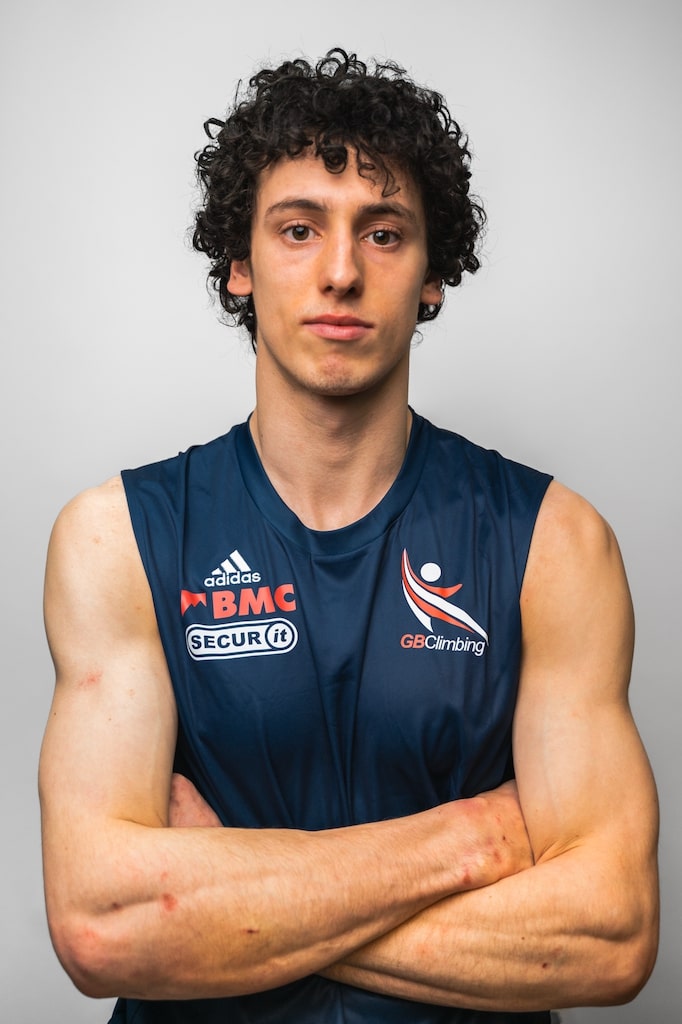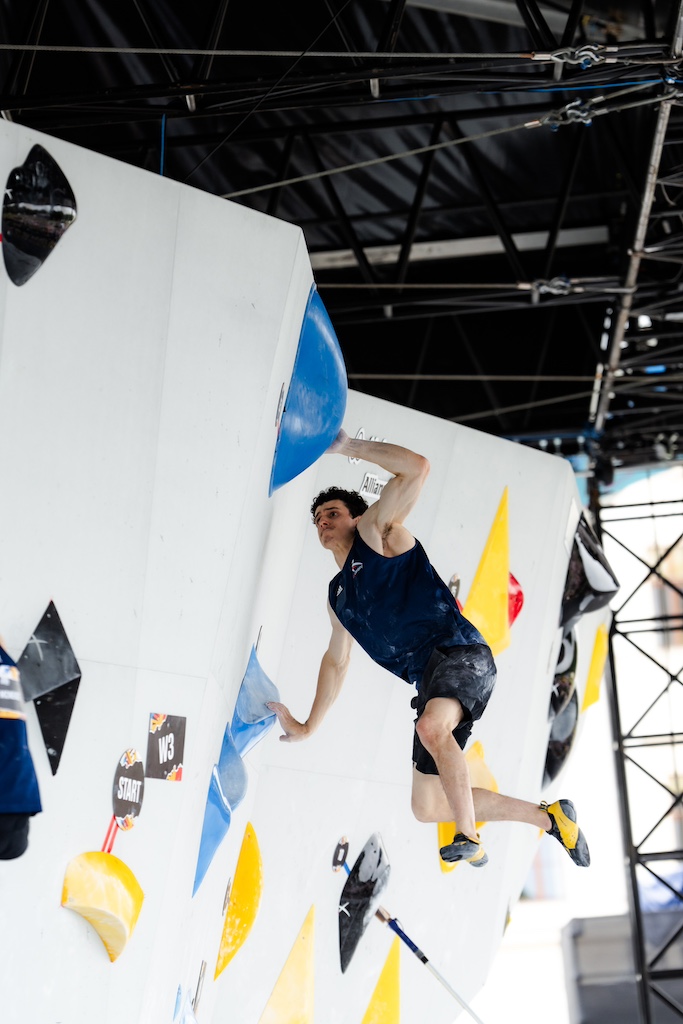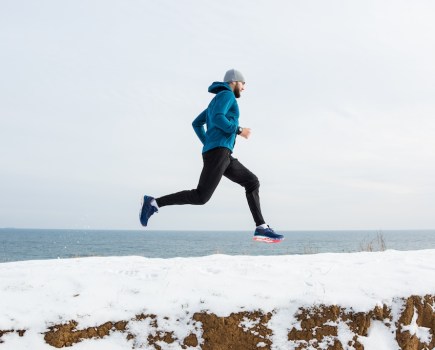Sport climbing will feature in its second Olympics at Paris 2024 – but with a new format and riding on the back of a surge in popularity. Thanks in part to the worldwide coverage the Tokyo 2020 Games gave the sport, climbing now boasts over 25-million enthusiasts in 150 countries.
“Climbing is one of the fastest-growing sports in the world,” Team GB medal hopeful Hamish McArthur told me in an exclusive interview before the Games began. “You can see it from the increasing number of climbing walls and people taking up the sport as a hobby. The exposure from the Olympics has been incredible.”
The sport’s organized competitions began in 1985 with SportRoccia in Bardonecchia, Italy, followed by the first artificial wall event in Vaulx-en-Velin, France, in 1986. Sport climbing debuted on the Olympic stage at the Buenos Aires 2018 Youth Olympic Games, gaining popularity for its spectacle and suspense.
It joined the Tokyo 2020 Games and will continue as one of the additional sports in Paris 2024 alongside breaking, surfing, and skateboarding. Climbing looks like it’s got a firm foothold, too, as it’s confirmed as being part of the Los Angeles 2028 Olympic Games.

Climbing at the Olympics
Until this Olympics, sport climbing has comprised of three formats: bouldering, speed, and lead. In bouldering, athletes climb 4.5m walls without ropes, aiming for the fewest attempts within a limited time. Speed climbing is a head-to-head race up a 15m wall, with top athletes completing it in under six seconds for men and seven seconds for women. The lead event challenges climbers to ascend as high as possible on a 15m wall within six minutes, without prior knowledge of the route.
“But for Paris bouldering and lead climbing are combined, while speed climbing has its own medal,” explains McArthur. “Bouldering is about power, coordination, and fast movements, while lead climbing focuses more on endurance, efficiency, and technique. They are different, but they complement each other well. The best boulderers are often also the best lead climbers.”
The speed event also captures the imagination of newcomers to the sport for its sheer pace and agility, as two climbers aim to be the first to reach the top of the climb in the quickest time. It looks, to the untrained eye, like a mad scramble by Spiderman wannabees, but McArthur insists it’s much more complex:
“It’s very delicate, almost like a dance when it goes well and things flow. A lot of my preparation is about zoning into that feeling. There’s a lot of physical training too. It’s a highly physical sport where you need really good coordination and awareness of where all your limbs are and how much force you’re applying.
“Competing in climbing is about making tiny micro-adjustments and decisions under pressure. From the outside, it looks very macro—big muscle groups and big movements —and yeah, you need to be as strong as possible in every body part. But at this level, the mental dance makes the most difference.”
Climbing at Paris 2024: when it’s on and what to expect
At Paris 2024, sport climbing will feature two medal events per gender: speed, and combined (boulder + lead).
Speed: 28 athletes (14 per gender) will compete. The event includes a qualifying round and head-to-head races, with the top climbers reaching the finals.
Combined (Boulder + Lead): Athletes compete in both boulder and lead disciplines, with a maximum of 200 points available (100 per discipline). Points in bouldering are awarded for reaching zones and the top; in lead climbing, points decrease from the top down.
Sport Climbing at Paris 2024 runs from 5-10 August.
Collaboration and competition
For climbers like McArthur, taking part in the bouldering + lead event, the first time they will see the wall they’re about to climb is just a few minutes before the competition starts. “We get that five minutes to look at it and figure out the route from the ground,” he says. “We’ll all discuss ideas, then we go back into isolation and come out one at a time. It’s a collaborative effort to maximize everyone’s performance, which is a great part of the sport.”
McArthur doesn’t feel any rivalry as such – he’s known a lot of his co-competitors since junior climbing days. “Many of them are friends that I’ve competed against since I was 14. We support each other, and I genuinely want the best for them.”
“Team GB’s Toby Roberts is one of the favorites going into the games, he’s an awesome climber,” adds McArthur. “It’s great to have such talent from our country. Especially since the UK hasn’t been dominant in climbing like in other sports such as cycling in recent years.” Key competitors in the speed event to watch out for include Matteo Zurloni (Italy) and Aleksandra Miroslaw (Poland).

Feeling the heat
One factor that McArthur says may be something of a ‘leveller’ in this event is the heat and humidity forecast for Paris. The indoor climbing arena, with its excited crowd and sweating athletes, will generate a lot of moisture as things heat up.
“It’s a good point and one a lot of us are talking about,” says McArthur. “Generally, climbers prefer it to be cold and dry to increase friction. But in Paris, mid-summer in a packed arena, the conditions will be challenging.
“Many climbers will have mini-fans cooling their hands down or hold ice packs before climbing. We also use liquid chalk, which is chalk mixed with alcohol. You rub it into your hands, and as the alcohol evaporates, it dries your hands which can make all the difference when gripping those minuscule holds.”
But when it comes to the pressure of performing to a worldwide audience of hundreds of millions, McArthur is in the ‘no sweat’ camp. “Sure, there’s definitely pressure, but it’s also an incredible opportunity,” he says. “The fact that Team GB has qualified its maximum quota of climbers this time is amazing. We have four athletes competing, providing different role models for aspiring climbers. There’s a responsibility to use this opportunity for good, not just for single-minded competition.”
If you’re interested in finding out more about climbing, visit thebmc.co.uk









